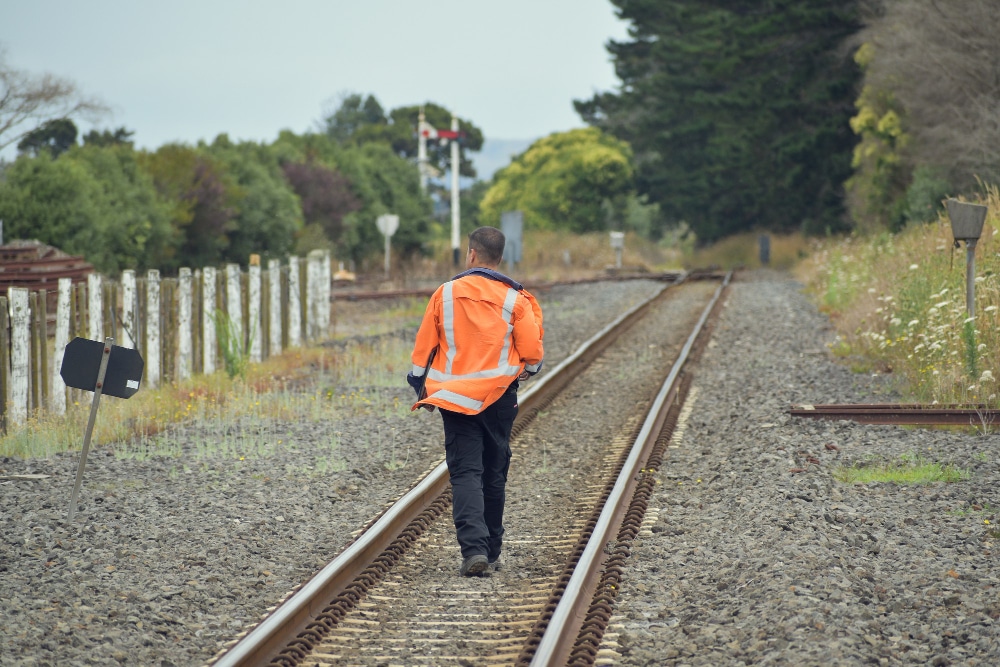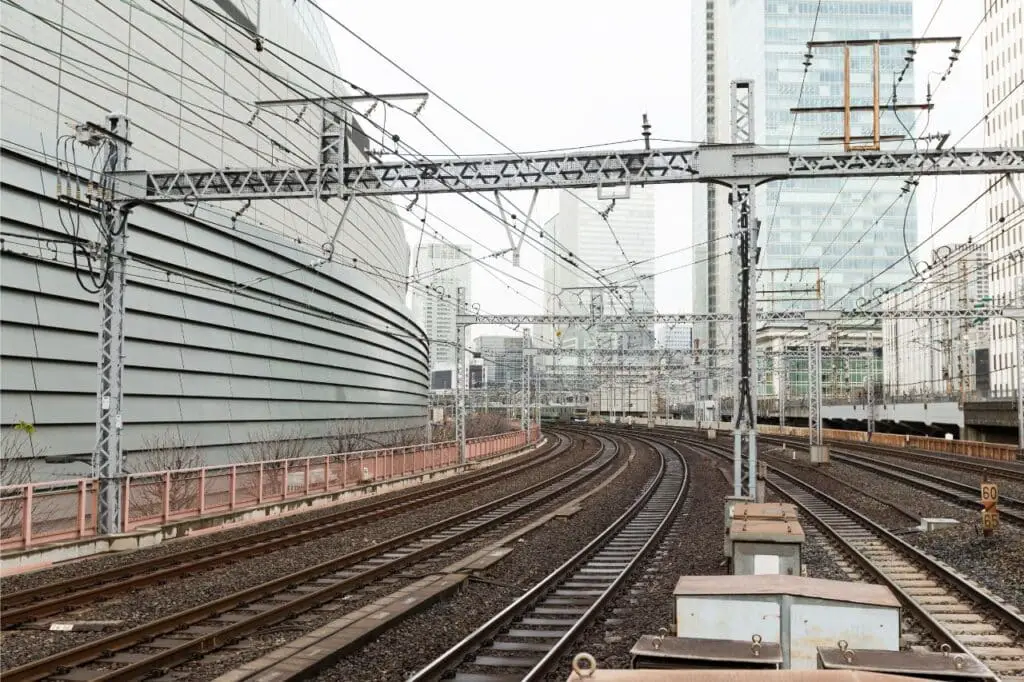Are you looking for railroad jobs in Kansas? You might also be thinking, “are there even any railroads in the state?”. Yes, there are. There was massive desertion of railroads in the Sunflower State in the 1970s. Despite this, Kansas maintains an extensive rail network with nearly 6,000 miles of track. But, more on its history later.
There is four class I railways operating in Kansas. These include the BNSF, KCSR, NS, and UP. Additionally, Kansas houses several regional railroads and some shortlines. Plus, Amtrak trains also run in the state.
Railroad jobs in Kansas span from train conductors to electricians. There are additionally operational and in-office positions. The list goes on. Therefore, you will undoubtedly find a job that suits you. And today, we’ll help you do just that.
In this post, we tackle the importance of the Kansas railroad to the economy. Next, we go through some tips for your job search. And finally, we go in-depth on the companies you can work for. Let’s start!

Kansas Railroads: History and Its Impact On The Economy
The railways of Kansas have a long and fascinating history. Did you know that Kansas once ranked third in overall rail distance? There are several reasons for this. One of which is the area’s extensive agricultural history. There were agricultural branch lines all across the Midwest. These lines ran from Minnesota to Illinois and beyond. As a result, Kansas gained hundreds of miles. The railway system was a staggering 10,000 miles long.
The Santa Fe and Missouri Pacific had the most extensive service. Although, all leading regional carriers serviced Kansas. Many of these were beneficial until the middle of the twentieth century. What happened?
William Barstow Strong and Jay Gould had a furious competition. They fought over the ownership of the region’s agricultural and livestock trade. Gould constructed a complex network of railway lines solely to thwart Strong’s expansion.
Subsequently, hundreds of miles of lines were torn to shreds across the state. In fact, you can see these lines today. Currently, Kansas bears less than half the miles of track from its glory days.
As you can probably tell, Kansas railroads had it tough. But the industry is still alive and kicking today. It’s also one of the notable drivers of the economy. The sector provides jobs, competitive salaries, and good employee benefits. Apart from that, it helps transport goods and people.
Today, most of Kansas’s railroads are run by Class Is. These are Kansas City Southern, BNSF Railway, and Union Pacific.

Where To Find Railroad Jobs In Kansas
Railroads in Kansas come in three classes. These are the class Is, IIs, and IIIs. Regarding job hunting, know that no class is better than the other. Railroad classes are mainly classified by their operating revenues.
Each has its unique operating system. Ultimately, it’s up to you to decide which works best for you.
Class I Railroad Jobs in Kansas
To qualify as a Class I railroad, a company must make more than $250 million yearly revenue. Most routes and mainlines are also owned by Class I railroad corporations. They have an extensive collection of trains and freight cars. They additionally transport a wide range of goods.
One thing you need to note about Class I railroad jobs are their schedules. Those employed by Class I railways are mostly limited to a 12-hour workday. Some companies also house their employees in hotels for travel. In other words, railroading can become a way of life. But, these usually apply to fieldwork jobs.
Still, ensure you think about these factors.
BNSF Railway
The modern BNSF Railway system was created via a succession of expansions. These first appeared in 1970, over four decades ago. And today, the railroad is an esteemed and well-known transportation corporation. It consistently ranks as one of the top railway companies.
The BNSF network spans 28 states and includes 32,500 miles of track. Much of it is situated near the western edge of the Mississippi River. It runs a lot towards the Southeast too. They also operate nearly 6,000 locomotives at their disposal. It is the highest-earning USA railroad with a whopping 23 billion in yearly revenues
Additionally, the company has approximately 50,000 employees under its wing. They have positions from conductors to managerial roles.
Click here to learn more about the jobs at BSNF.
Kansas City Southern Railway
KSSR is the shortest Class I railroad in the United States. KCS had a network of nearly 6,000 miles when it was at its prime. The company also employed around 6,000 people. In its numerous years of operation, the KCS endured turbulent moments. But, now they are recognized as a prosperous railway with great management. Seven key corporations and government sectors rely on KCS to transport their cargo. These include:
- Farming and mining
- Military
- Oil and chemicals
- Automotive
- Electricity/energy
- Commercial goods
- Intermodal
Learn more about working with KSCR by clicking here.
Norfolk Southern
Did you know that Northfolk Southern wasn’t a wholly planned railroad? It was born out of necessity. In the 1970s, a frenzy of mergers took place, and this activity lasted far into the 1980s. And today, it is one of the country’s best-managed Class I railroads. Norfolk Southern is an essential carrier of industrial goods. Some of these include agriculture, forestry, gas, electricity, and more.
Learn more about Norfolk Southern by clicking here.
Union Pacific
This is arguably North America’s biggest railway company. Union Pacific has been in service ever since it was built. They commenced even before the Civil War era! Moreover, Union Pacific is one of the most successful Fortune 500 countries. It currently runs 32,000 miles of track and extends over 23 states. Furthermore, the railroad caters to freight, industrial, and prestige businesses.
Work with one of America’s best railroads! Learn more about Union Pacific by clicking here.
Regional Railroad Jobs in Kansas
Class II or regional railways have fewer track miles and revenues than Class Is. They are classified as generating under $250 million in operating revenues yearly.
Regional rails typically possess lengthy mainline railway lines. These are what they use to transport commodities. However, they frequently contain a network of auxiliary lines. These lines stretch out and link to enterprises and mills. Moreover, they may not create or collect many shipments compared to Class Is.
However, this does not mean that they are not useful. Regionals are incredibly helpful for small-scale businesses. It offers them quick access to key infrastructures in the country. Apart from this, regionals help with creating traffic for class Is.
If you’re looking for a job with a more “set” schedule, then look into regional rails. What’s more, they can add experience to your CV before stepping up into bigger roles.
Kansas & Oklahoma Railroad
This is one of the largest regional railroads in the Watco network. Western and central Kansas are served by this railroad, which runs 840 miles of track. The property’s roots are mostly in Santa Fe, including certain Missouri Pacific portions.
Learn more about them by clicking here.
Kyle Railroad
This regional railroad covers around 500 miles of track. It runs through Rock Island’s old line in Chicago, which is the conduit for the majority of its tracks. Kyle Railroad has been a subordinate of the G&W since 2012. The company also hauls a broad variety of cardo.
Learn more about their available positions on the G&W website. Click here.
Missouri & Northern Arkansas Railroad
Genesee & Wyoming is presently in charge of this branch of the regional network. It was put into operation in 1992 and has been in continuous use ever since. In that same year, it started purchasing Union Pacific’s trackage, totaling 102 miles. Approximately 600 miles of track are now in use by the M&NA. A total of over 100,000 carloads pass through the facility a year.
Click here to learn more about the company.
Nebraska Kansas Colorado Railway
NKCR comprises 509 miles of track across three American states Wheat, maize, coal, and fertilizers are just a few of the commodities it transports. It’s also owned by the holding company Omnitrax. If you want to learn more about this company, visit the Omnitrax website. Click here.
South Kansas & Oklahoma Railroad
One more Watco class II railroad is the SK&O. Several sites in southeast Kansas are reached by this route, which passes via Tulsa, Oklahoma. In addition to Winfield and Humboldt, additional nearby towns include Pittsburg and Pitt. It has a total area of 404 miles and handles more than 50,000 carloads each year.
Learn more about this company by visiting the Watco website. Click here.

Shortline & Terminal Railroads
Class III railways are typically the smallest point-to-point railway networks in the United States. Hence, their name. Their tracking zone might vary from a few kilometers to hundreds of kilometers. Additionally, their formal categorization is reliant on their total earnings being below $20 million.
The majority of American Class III railways are “branch line” rails. These run on lower speeds which were leased by more extensive railways.
When compared to a big railroad company, shortlines often have fewer locomotives. However, they can generally deliver a superior standard of service.
When it comes to employment, shortline companies can help you gain experience. These jobs can be a great jump-off point for you.
Blackwell Northern Gateway Railroad
This shortline was founded in 2000, and Oklahoma RR and South Kansas were its previous operator. Subsequently, the Blackwell Northern Gateway Railroad superseded the BNR in 2005. During this time, the Oklahoma Department of Transportation took over its operations.
The Blackwell Industrial Park is also located at the southern terminus of this line. This, however, is serviced by US Rail Partners, Ltd.
BNGR offers transloading services to its customers. Wichita, Kansas, Tulsa, Oklahoma City, Oklahoma, and the surrounding areas are all within easy driving distance. This makes the shortline a prime distribution hub for goods bound for all these cities.
Cimarron Valley Railroad
The Cimarron Valley Railroad is one of the privately-owned class II railroads. As part of The Western Group, it has been operating since 1996. To add to its trackage portfolio, it bought out the old Santa Fe trackage in three more states in 2007. Overall, the route contains 254 miles of track.
Garden City Western Railway
The Pioneer RailCorp owns and runs this railroad, which stretches 40 miles from Garden City. From here, it runs through Shallow Water and branches out in Wolf. Garden City Western Railway dates back to 1916 and is one of the renowned shortlines. Visit their website to learn more about their job openings. Click here.
Trona Railway
Finally, the Trona Railway. Businesses were drawn to the Searles Dry Lake because of the lake’s mineral resources.
That’s how Trona Railway got its start in 1913. Its owner then constructed a 30-mile line to link the mine’s materials to Southern Pacific’s Class I railroad. Trona Railway is still flourishing today, hauling the same goods, albeit diversifying a little with time.
There’s no information about Trona Railway jobs online. However, you can contact the company directly for more details.

Begin Your Railroad Career in Kansas.
And there you have it! If you want to start your journey as a railroader, look no further than Kansas. It houses four Class I railroads, some regionals, and a handful of shortlines. You won’t fall short of choices.
Take note that job hunting won’t be perfect. As with any job, you’ll run into some challenges. But, don’t worry. In the end, it will be incredibly worthwhile. You got this!
And once you do score the job, it will be very fulfilling.
If you’re not set on Kansas yet, you can look through our job listings per state! Click here.
We also post articles about the railroad industry from time to time. Check out our website for more.
That finally wraps up our list of railroad jobs in Kansas. We wish you all the best in your job search and railroad career!
